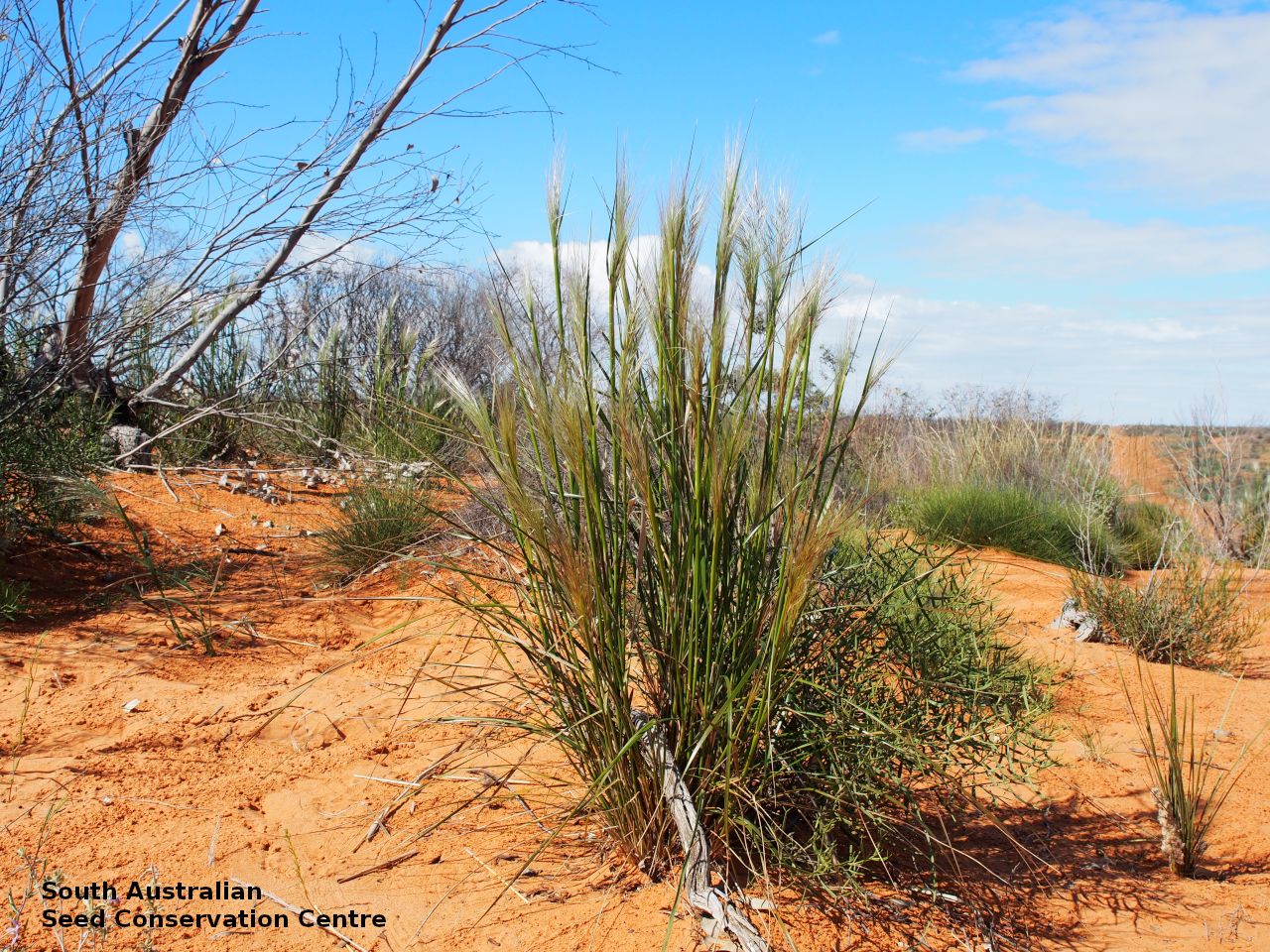
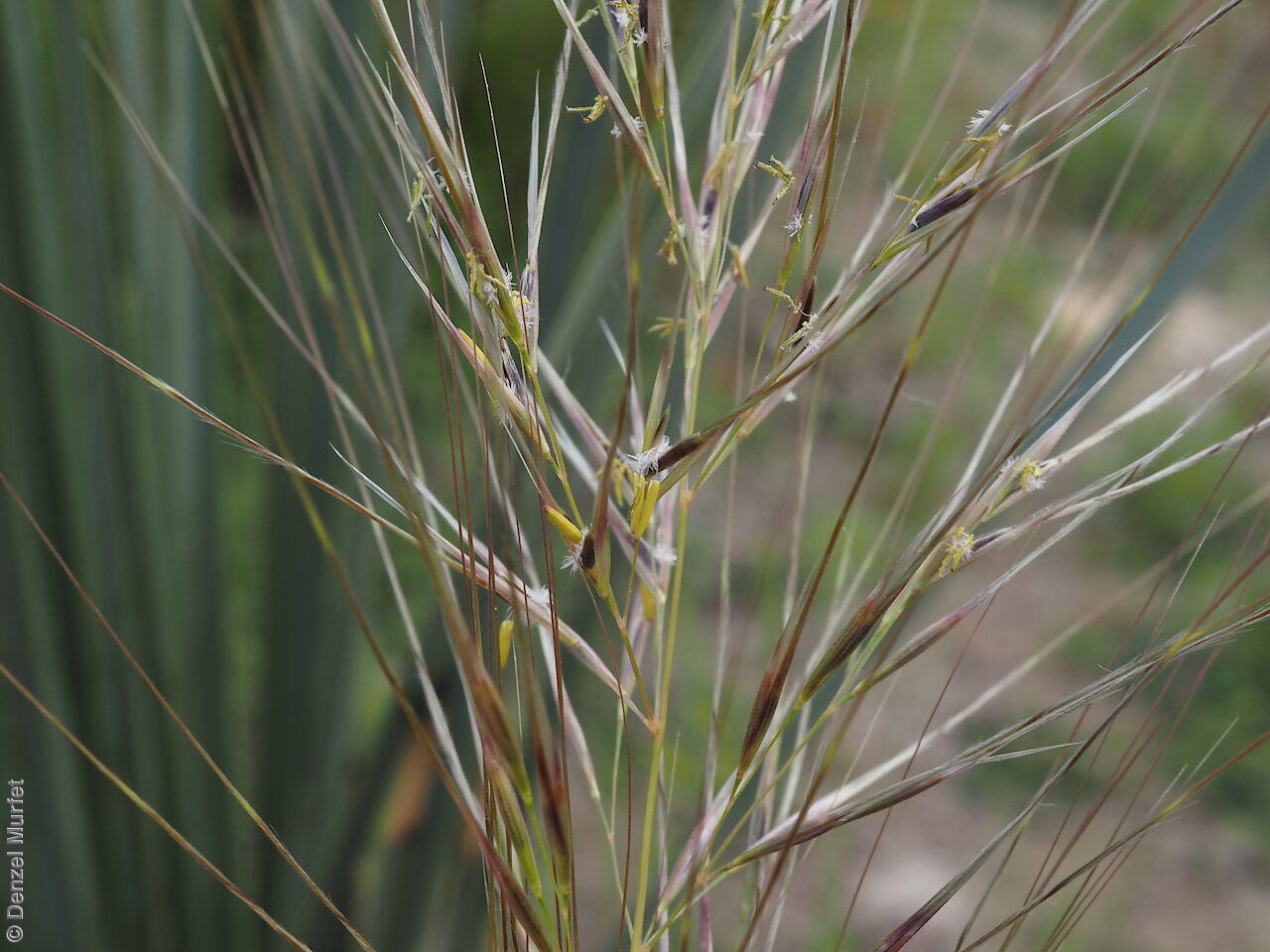
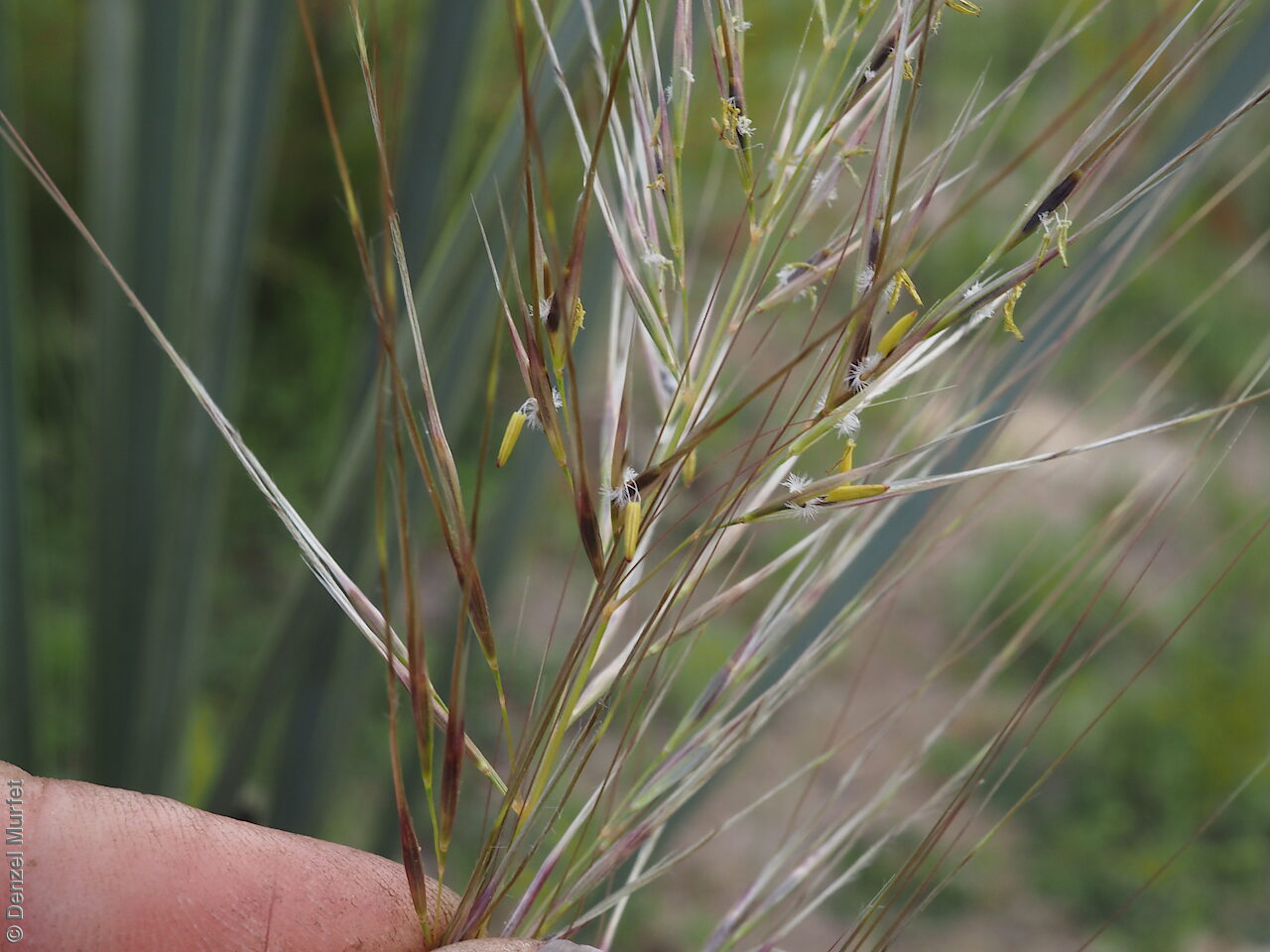
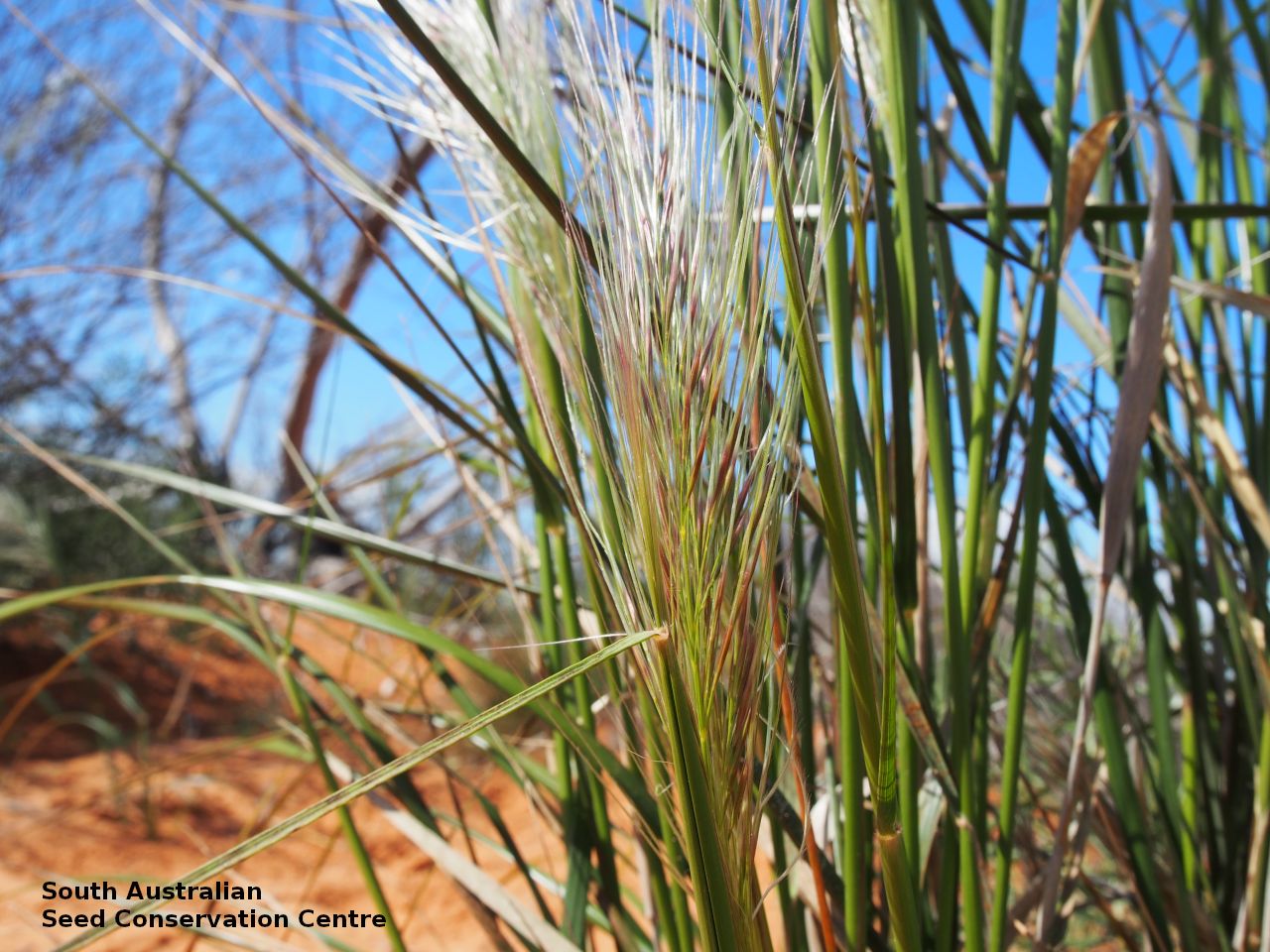
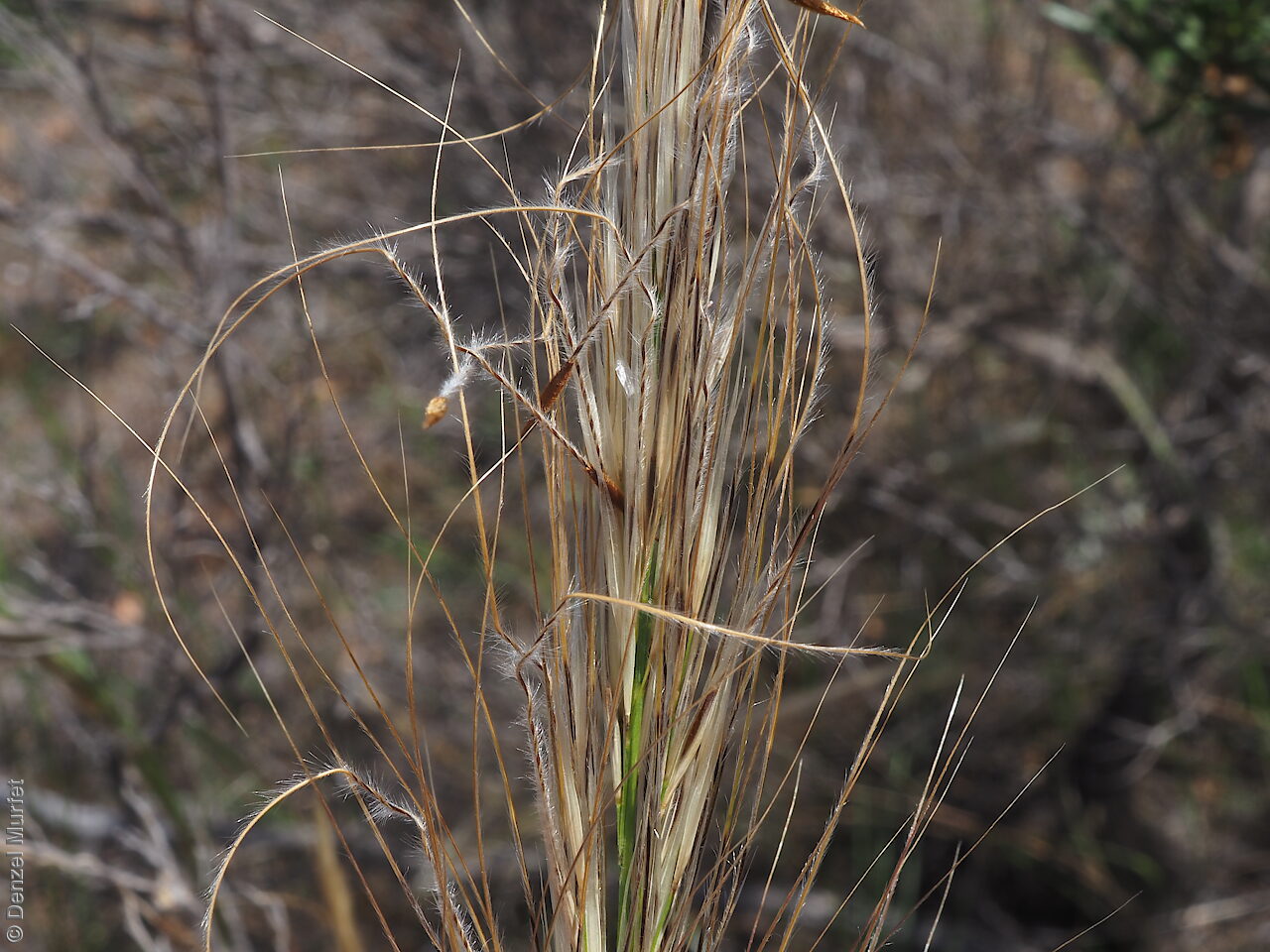
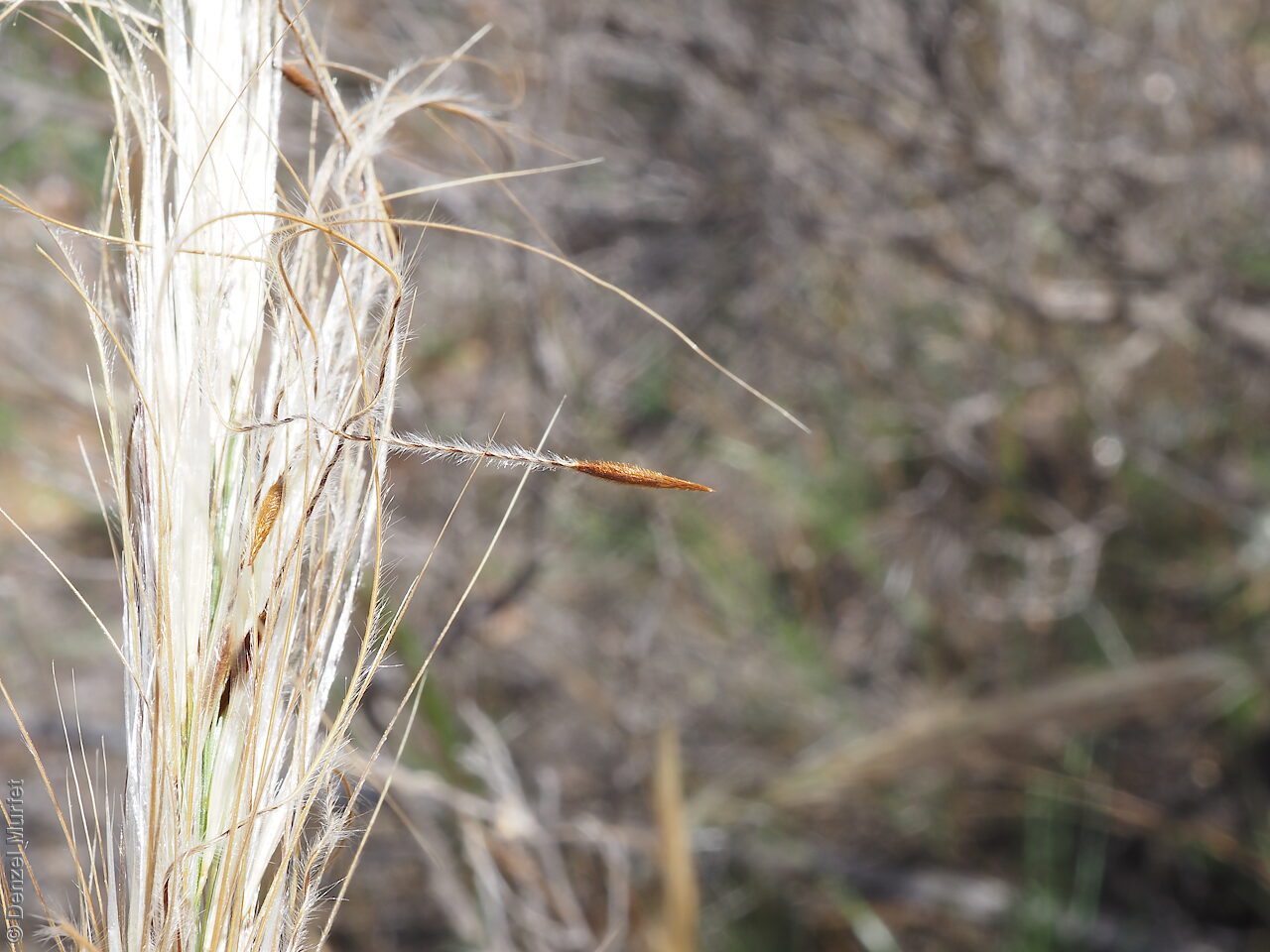
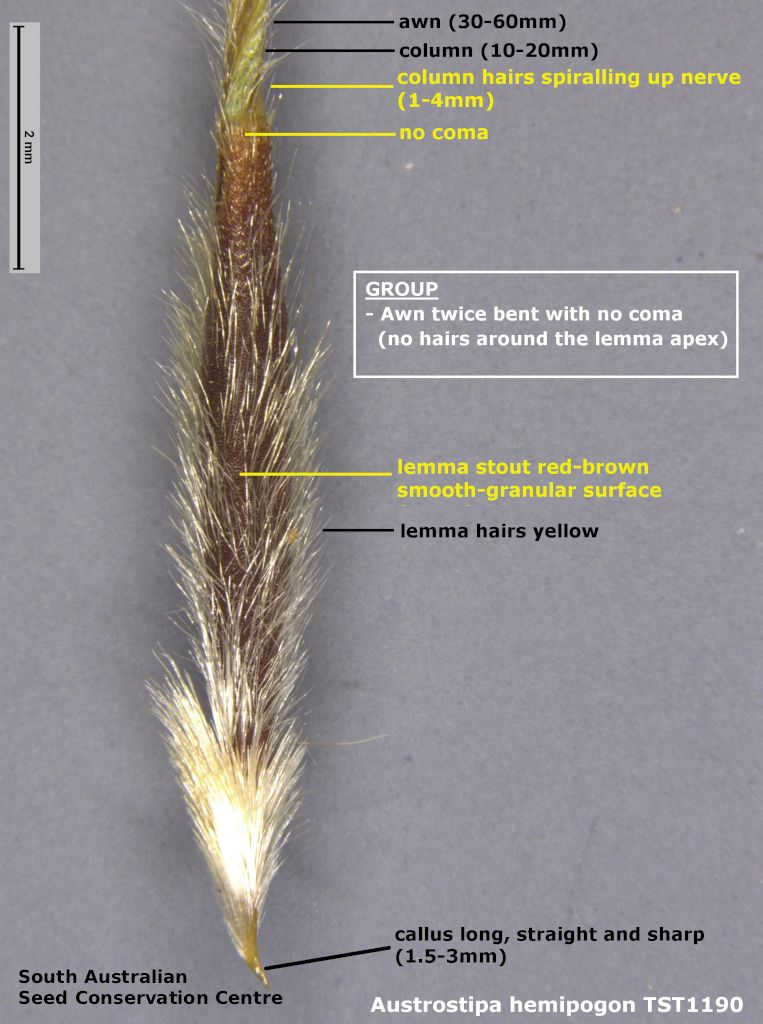
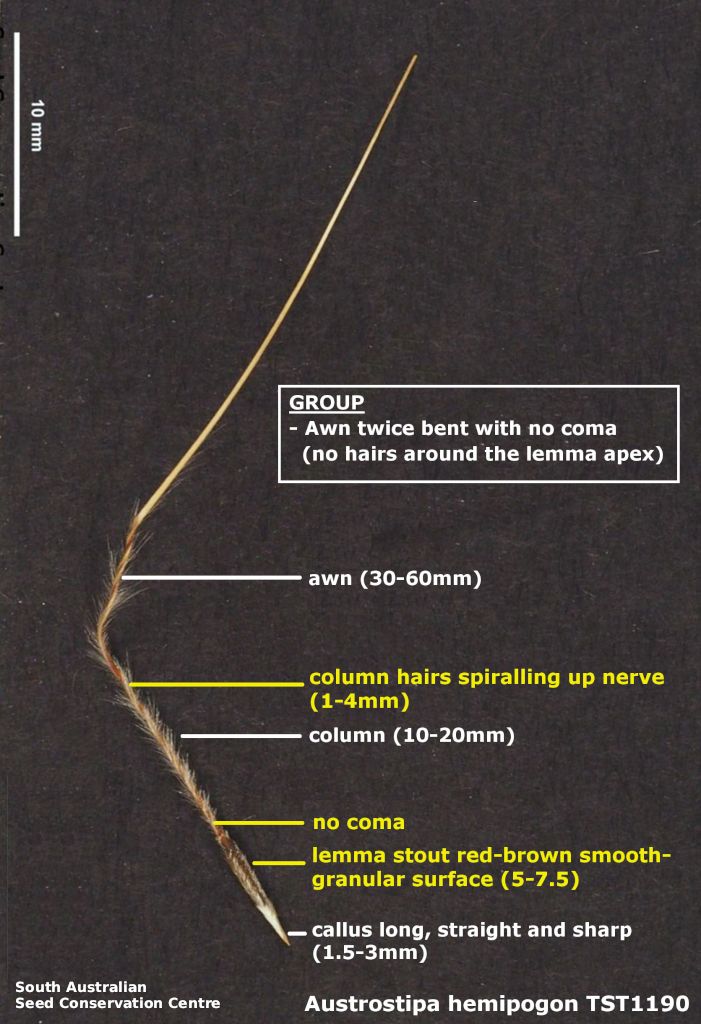
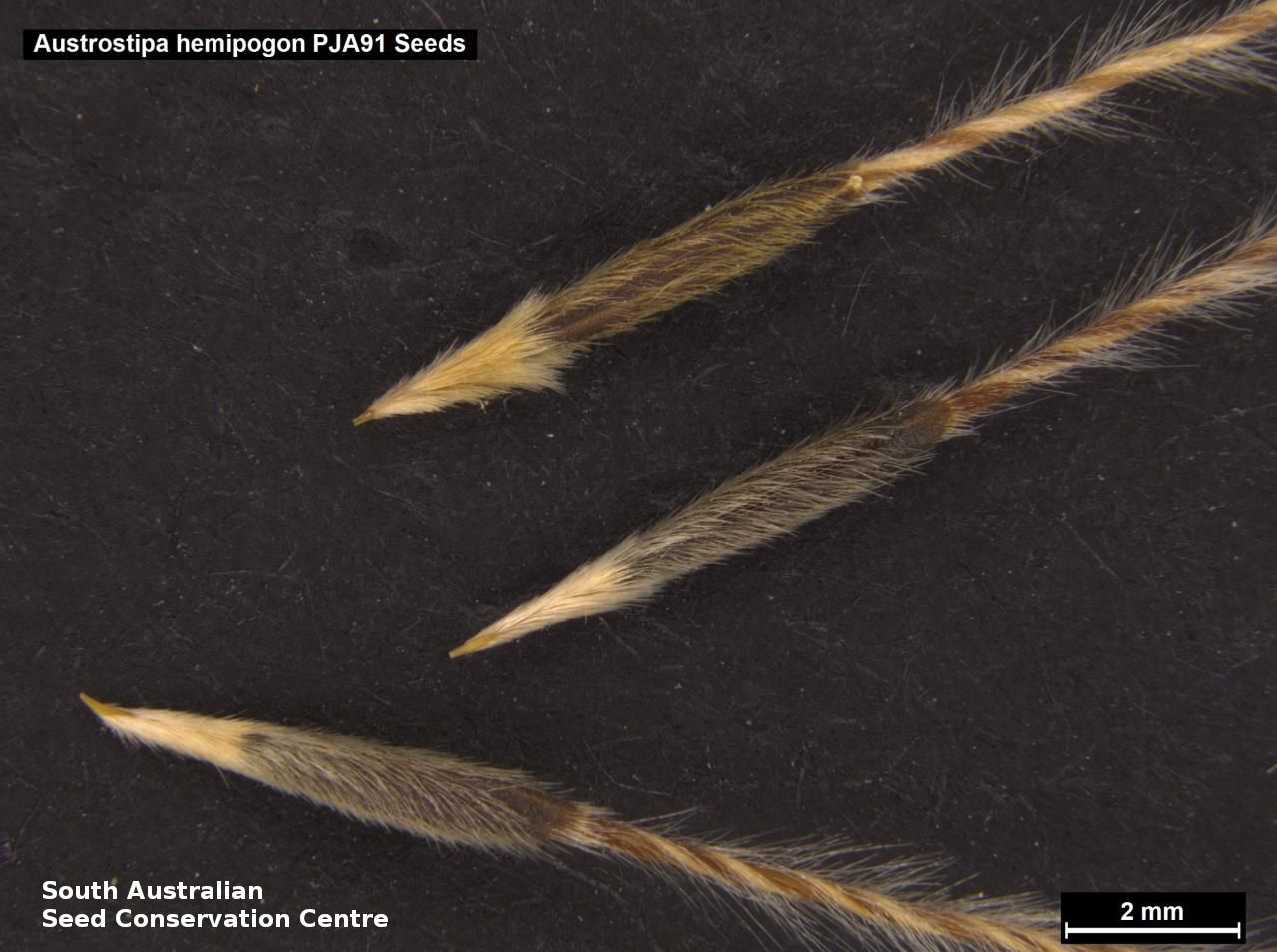
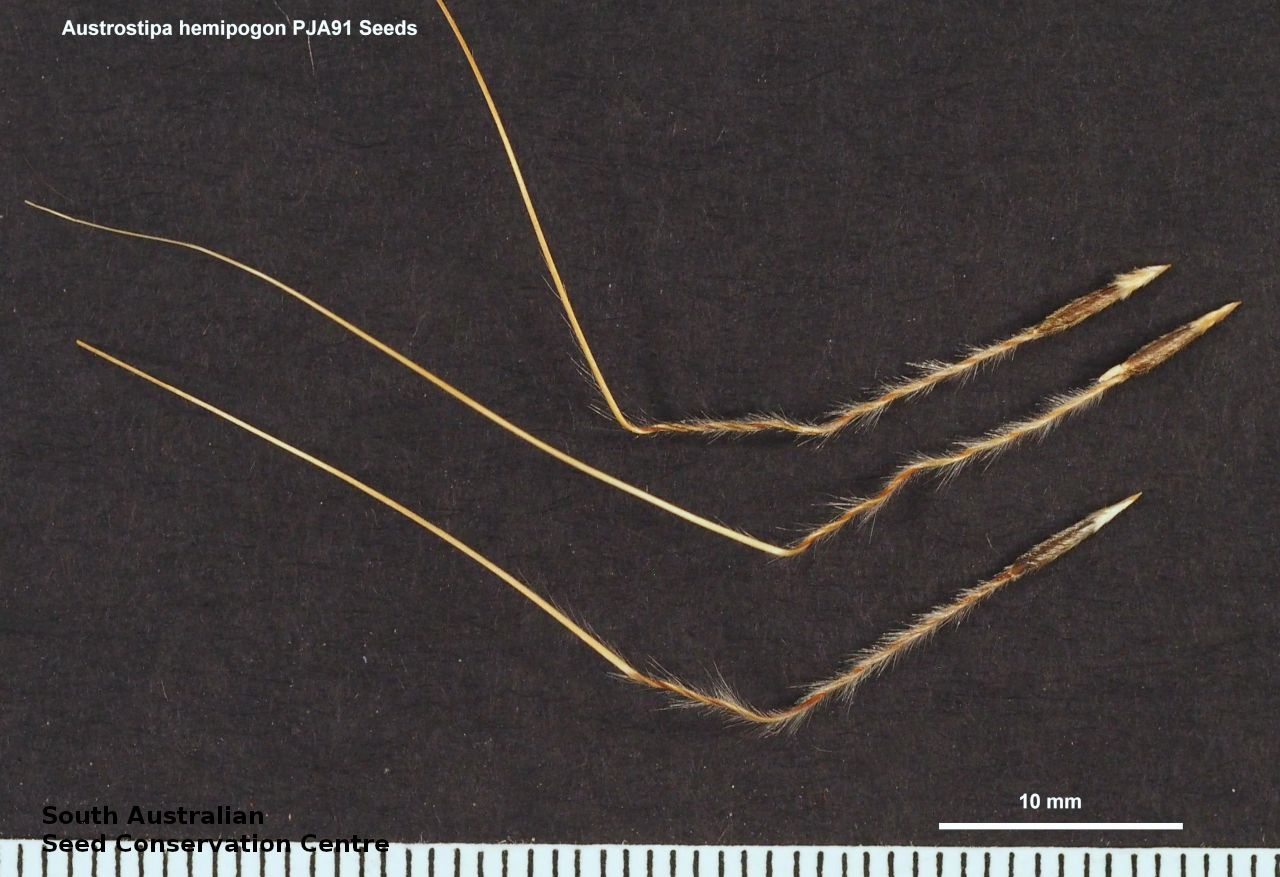

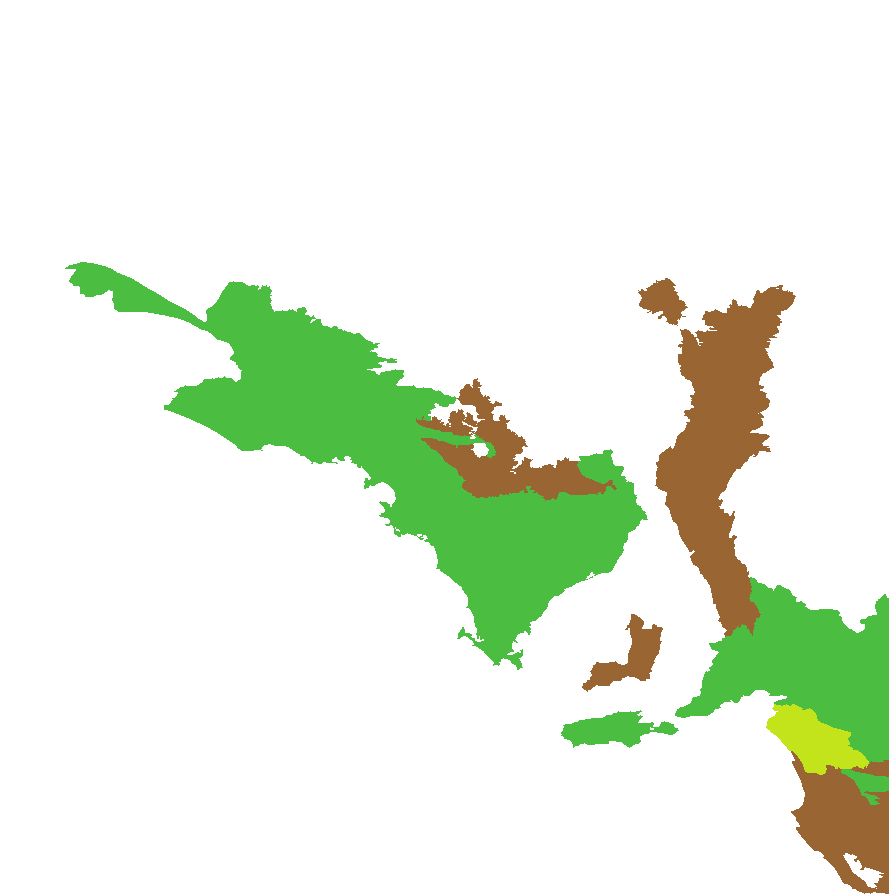
Botanical art
Prior names
Stipa semibarbata var. gracilis
Stipa nobilis
Stipa indeprensa
Stipa hemipogon
Etymology
Austrostipa from the Latin 'auster' meaning south and the genus Stipa, referring to the genus being allied to Stipa but restricted to Australia. Hemipogon from the Greek 'hemi' meaning half and 'pogon' meaning beard, referring to its lemma with shorter hairs towards the apex.
Distribution and status
Found in the southern part of South Australia, south of the Gammon Ranges growing on sand and clay in mallee scrub, woodland, heathland and grassland. Also found in Western Australia and Victoria. Native. Common in South Australia. Rare in Victoria. Common in Western Australia.
Herbarium regions: Flinders Ranges, Eyre Peninsula, Murray, Yorke Peninsula, Southern Lofty, Kangaroo Island, South Eastern, Green Adelaide
NRM regions: Adelaide and Mount Lofty Ranges, Eyre Peninsula, Kangaroo Island, Northern and Yorke, South Australian Arid Lands, South Australian Murray-Darling Basin, South East
AVH map: SA distribution map (external link)
Plant description
Tufted perennial grass to 1 m high with culms unbranched and pubescent nodes. Leaves scabrid, sparsely pubescent with blade weakly to strongly inrolled, to 20 cm long and 3 mm wide. Inflorescence a loosely contracted panicle to 25 cm long, with purplish or green glumes to 20 mm long, upper glumes to 15 mm long. Flowering between September and February.
Key to this species: awn twice bent with no coma (no hairs around the lemma apex); awn 30-60 mm with bristle sometimes curved; awn hairs spiralling up the nerves (1-4 mm) sometimes up the bristle; lemma stout (5-7.5 mm) with red-brown smooth granular surface, panicle loose, upper glume 10-15 mm. Fruits are red-brown lemma to 7.5 mm long with finely granular surface and covered in white to golden hairs; callus long straight sharp to 3 mm long; awn twice bent to 60 mm long with bristle sometime curved; column densely plumose with a spiralling line of hairs to 4 mm long up the nerve; palea about equal to lemma, with a line of hairs down the centre. Seeds are yellow-brown ellipsoid grain to 4 mm long within the lemma. Seed embryo type is lateral.
Seed collection and propagation
Collect seeds between October and March. Use your hands to gently strip the seeds (lemma) off the mature fruiting spike, those that are turning brown. Mature seeds will come off easily compare to the immature seeds that remain on the spike. Alternatively, you can break off the whole fruit spike to allow some of the seeds to mature further. Place the seeds/spike in a tray and leave to dry for two weeks. No further cleaning is required if only seed collected. If seed spikes collected, use hand to strip off the mature seeds. Store the seeds with a desiccant such as dried silica beads or dry rice, in an air tight container in a cool and dry place. Viability of grass seeds could be very viable, depending on time of seed collections and seasonal conditions.
| Location | No. of seeds (weight grams) | Number of plants | Date collected | Collection number Collection location | Date stored | % Viability | Storage temperature |
|---|---|---|---|---|---|---|---|
| BGA | 4,200 (11.77 g) | 161 | 25-Nov-2004 | PJA91 Eyre Peninsula | 28-Mar-2006 | 85% | -18°C |
| BGA MSB | 1,800 (5.06 g) 1,800 (5.06 g) | 100+ | 9-Nov-2004 | MKJ41 Eyre Peninsula | 28-Mar-2006 | 70% | -18°C |
Number of plants: This is the number of plants from which the seeds were collected.
Collection location: The Herbarium of South Australia's region name.
% Viability: Percentage of filled healthy seeds determined by a cut test or x-ray.